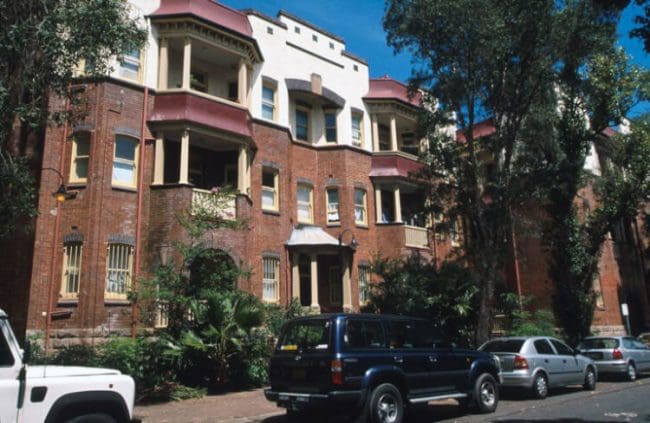Last week we discussed the kind of surveys you need when you buy a new apartment. But what about older apartments?
It’s not as if flats built more than 10 or 20 years ago are immune from defects. Long-term issues could just be coming to fruition, for all you know.
If you are serious about making an offer or bidding at auction, get a professional to take a look at the unit and the whole building. However, to save money, you can first do your own detective work.
Inside the unit, look for tell-tale signs of damp or water stains and painted repairs from previous floods, drips or pipe bursts.
Old electrical wiring and smoke alarms (or the absence thereof) are issues that you will want to address, even if the previous owners didn’t.
Windows and sliding balcony doors should be checked, especially in buildings more than 50 years old, as they could be lot property rather than common property, and therefore another bill heading in your direction.
Either way, they could represent future expense – if all the common property windows in the block are rattling and leaking you’re going to end up paying your share of repairs sooner or later anyway.
Have a look on your balcony and bathroom floor for raised tiles and in concrete walls for cracks and bursts. These could be possible signs that there’s concrete cancer.
Rattling lifts that don’t quite stop where they’re supposed are another tell-tale sign that the block is not as well-maintained as it might be.
Cracked windows, rusty hinges and locks on the front door and vandalised or unlocked letterboxes are all signs of neglect that you’d be foolish to completely ignore.
The notice board, especially in older buildings, can be very revealing – especially when disputes between the strata committee and residents are played out in the published minutes.
Notwithstanding owners’ rights to know what’s going on in the block, naming and shaming of residents for misdeeds, real or imagined, is just a form of strata bullying and often a sign of an unhappy building.
Which takes us to the strata search. You want this done by an expert who will look for signs that the community is less than harmonious, that some problems have been covered up, ignored or neglected, and that other issues are still to be played out, possibly with new, restrictive by-laws.
We’ve had sad cases played out in the Flat Chat Forum of owners with pets bought into apartment blocks in the belief that pets were allowed, but the strata search didn’t pick up clear signals that moves were afoot to change the by-laws, which happened between the inspection and the exchange.
An amateurish and underfunded capital works or maintenance plan could be a warning sign that repairs have been delayed, probably in the hope that subsequent owners will pick up the inevitable tab.
Minutes that are squeaky clean should also be a red flag to prospective purchasers. No building more than 10 years old will have had zero problems, so you have to wonder what’s missing.
You want to see evidence that problems have been solved, not the fiction that there were no problems.
Last month, a caller to our regular spot on ABC radio said he’d found the perfect apartment but it had cracks in the walls and two years of missing strata records. Run away, was our advice.
And finally, your surveyor should get underneath the block and see what’s going on, in terms of things like damp, rot, termites and subsidence.
We used to own a flat in a 1960s block where we discovered belatedly that one sagging corner was held up by a single adjustable steel acrow prop in the basement. They didn’t used to call it the sinking fund for nothing.
A version of this column first appeared in the Australian Financial Review.
Jimmy Thomson edits the strata living website flatchat.com.au and produces a weekly podcast called the Flat Chat Wrap. Strata laws vary from state to state.


This is now being discussed in the Flat Chat Forum